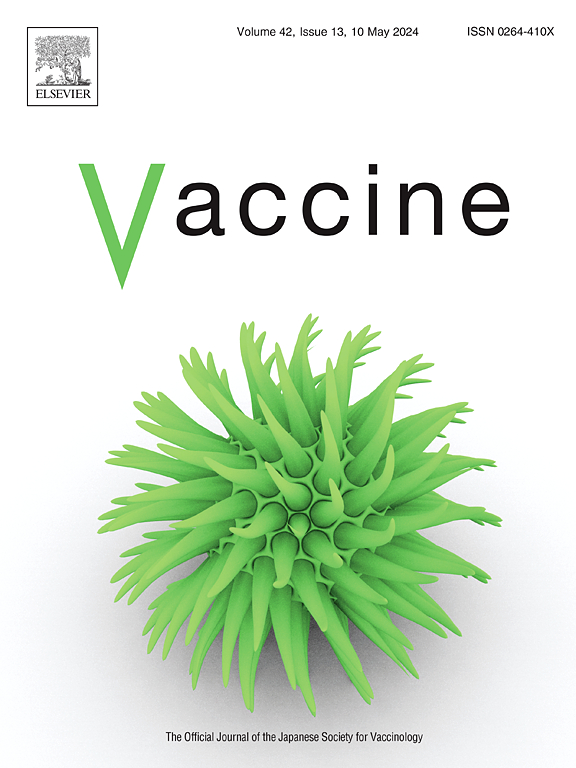FliC佐剂通过提高血清抗体、肠道分泌免疫球蛋白A和T细胞记忆,增强重组T2544抗原对伤寒沙门氏菌和甲型副伤寒沙门氏菌的保护作用
IF 4.5
3区 医学
Q2 IMMUNOLOGY
引用次数: 0
摘要
对预防伤寒沙门氏菌和甲型副伤寒沙门氏菌的安全、有效和负担得起的疫苗的需求仍然迫切,特别是在亚洲和非洲流行地区。与先前的看法相反,肠外疫苗可以诱导粘膜免疫,特别是当与粘膜运输信号相结合时。最近的研究表明,可溶性鞭毛蛋白(FliC)的全身递送通过TLR5激活CD103+树突状细胞,促进粘膜IgA和调节性T细胞反应。在此基础上,我们评估了鼠伤寒沙门氏菌重组FliC (rFliC)作为佐剂增强rT2544(一种亚单位候选疫苗)的全身和粘膜免疫。方法用不同剂量的rT2544和rFliC皮下免疫雌性BALB/c小鼠,确定最佳配方。选择剂量(5 μg rT2544 + 2.5 μg rfic)检测体液和细胞反应,包括血清IgG/IgA滴度、抗体分泌细胞、细胞因子(IFN-γ、IL-4、IL-17)和CTL活性。通过评估肠道、肝脏和脾脏的存活和细菌负荷,在伤寒沙门氏菌和副伤寒沙门氏菌感染的铁超载小鼠模型中评估了保护效果。结果rflc与rT2544联合使用可增强全身IgG和肠道IgA反应,增加ASCs,对伤寒链球菌和副伤寒链球菌具有较强的杀菌活性。该疫苗可诱导强大的Th1、Th2和Th17细胞因子,并提高CTL活性。免疫小鼠对伤寒沙门氏菌和副伤寒沙门氏菌A的存活率分别为83%和91%,肠道、肝脏和脾脏的细菌负荷显著降低。重要的是,皮下给药可有效诱导肠道sIgA,无需粘膜给药。结论皮下联合给药rFliC可诱导强抗原特异性粘膜sIgA,克服了常规粘膜佐剂的局限性。rflicl佐剂的rT2544引起了强大的体液、粘膜和细胞反应,对伤寒链球菌和副伤寒链球菌具有显著的保护作用。这些发现支持了它作为一种有前途的可注射亚单位疫苗治疗肠热的潜力。本文章由计算机程序翻译,如有差异,请以英文原文为准。
FliC adjuvant augments protective efficacy of recombinant T2544 antigen against Salmonella Typhiand Paratyphi A by increasing serum antibodies, intestinal secretory immunoglobulin A and T cell memory
Background
The need for safe, effective, and affordable vaccines against Salmonella Typhi and Paratyphi A remains urgent, particularly in endemic regions of Asia and Africa. Contrary to earlier beliefs, parenteral vaccines can induce mucosal immunity, especially when combined with mucosal trafficking signals. Recent findings show that systemic delivery of soluble flagellin (FliC) activates CD103+ dendritic cells via TLR5, promoting mucosal IgA and regulatory T cell responses. Building on this, we evaluated recombinant FliC (rFliC) from S. Typhimurium as an adjuvant to enhance both systemic and mucosal immunity of rT2544, a subunit vaccine candidate.
Method
Female BALB/c mice were immunized subcutaneously with varying doses of rT2544 and rFliC to identify an optimal formulation. The selected dose (5 μg rT2544 + 2.5 μg rFliC) was tested for humoral and cellular responses, including serum IgG/IgA titers, antibody-secreting cells, cytokines (IFN-γ, IL-4, IL-17), and CTL activity. Protective efficacy was evaluated in an iron-overload mouse model challenged with S. Typhiand S. Paratyphi A, by assessing survival and bacterial loads in the intestine, liver, and spleen.
Result
Co-administration of rFliC with rT2544 enhanced systemic IgG and intestinal IgA responses, with increased ASCs and strong bactericidal activity against S. Typhiand S. Paratyphi A. The vaccine induced robust Th1, Th2, and Th17 cytokines, and improved CTL activity. Immunized mice showed 83 % and 91 % survival against S. Typhiand S. Paratyphi A, respectively, with significantly reduced bacterial loads in the intestine, liver, and spleen. Importantly, subcutaneous rFliC delivery effectively induced intestinal sIgA, eliminating the need for mucosal administration.
Conclusion
Subcutaneous co-administration of rFliC induced strong antigen-specific mucosal sIgA, overcoming limitations of conventional mucosal adjuvants. The rFliC-adjuvanted rT2544 elicited robust humoral, mucosal, and cellular responses, providing significant protection against S. Typhiand S. Paratyphi A. These findings support its potential as a promising injectable subunit vaccine for enteric fever.
求助全文
通过发布文献求助,成功后即可免费获取论文全文。
去求助
来源期刊

Vaccine
医学-免疫学
CiteScore
8.70
自引率
5.50%
发文量
992
审稿时长
131 days
期刊介绍:
Vaccine is unique in publishing the highest quality science across all disciplines relevant to the field of vaccinology - all original article submissions across basic and clinical research, vaccine manufacturing, history, public policy, behavioral science and ethics, social sciences, safety, and many other related areas are welcomed. The submission categories as given in the Guide for Authors indicate where we receive the most papers. Papers outside these major areas are also welcome and authors are encouraged to contact us with specific questions.
 求助内容:
求助内容: 应助结果提醒方式:
应助结果提醒方式:


